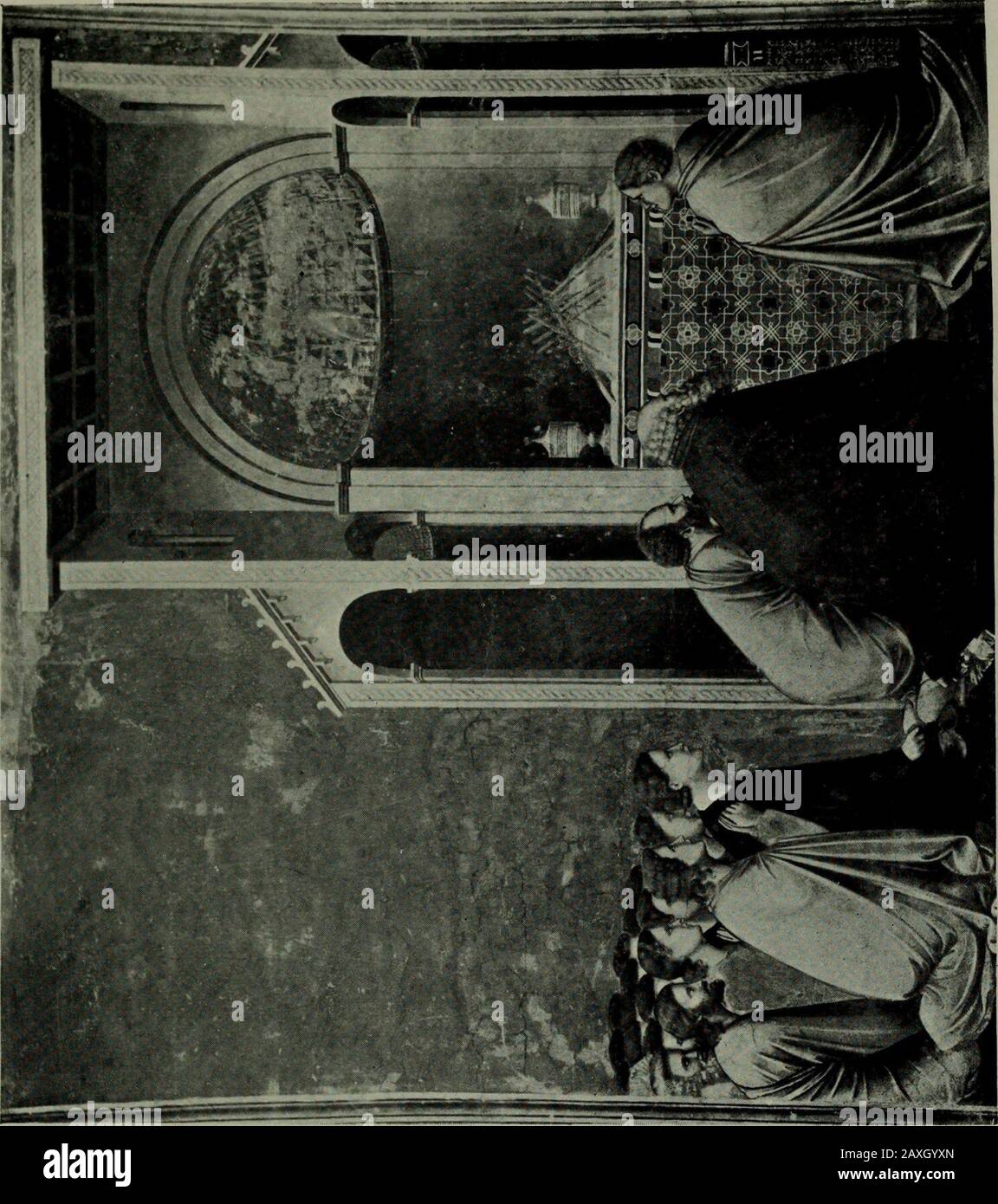Giotto . tuntinged with suspicion, appears in the features of thepriest behind the altar, described by a high authority asone of the most admirable of Giottos studies in expres-sion. One rod has been already laid upon the altar;both priests have a hand upon it, while both fix theireyes upon the suitor who next comes forward; the greatestneed for oversight is felt. Giotto makes little attemptto individualise the suitors : the faces of six only can beseen, but the presence of a greater number is conveyed,after the Byzantine manner, by a block of heads behindin rough perspective. Joseph contrasts

Image details
Contributor:
The Reading Room / Alamy Stock PhotoImage ID:
2AXGYXNFile size:
7.1 MB (493 KB Compressed download)Releases:
Model - no | Property - noDo I need a release?Dimensions:
1488 x 1679 px | 25.2 x 28.4 cm | 9.9 x 11.2 inches | 150dpiMore information:
This image is a public domain image, which means either that copyright has expired in the image or the copyright holder has waived their copyright. Alamy charges you a fee for access to the high resolution copy of the image.
This image could have imperfections as it’s either historical or reportage.
Giotto . tuntinged with suspicion, appears in the features of thepriest behind the altar, described by a high authority asone of the most admirable of Giottos studies in expres-sion. One rod has been already laid upon the altar;both priests have a hand upon it, while both fix theireyes upon the suitor who next comes forward; the greatestneed for oversight is felt. Giotto makes little attemptto individualise the suitors : the faces of six only can beseen, but the presence of a greater number is conveyed, after the Byzantine manner, by a block of heads behindin rough perspective. Joseph contrasts strongly with therest, his grey hair and beard giving them the appearanceof boys. He stands in the rear, watching no less in-tently than the others, but wholly devoid of the im-patient eagerness by which they seem to be animated. 10. The Watching of the Rods. The intensity of expectation remarked in the lastfresco reaches a still higher pitch in this. Asformerly in the case of Joachims sacrifice, so here. >s ^ M c- d L 2 C/2 QO [dXH O o I—I u ^ THE ARENA CHAPEL AT PADUA 113 Giotto testifies to the total preoccupation of his charac-ters by throwing them into attitudes more expressive thanpicturesque. A clumsy composition * is the result onone hand; on the other, a painting in which the emo-tional stress belonging to the situation is realised withwonderful power. S. Joseph*s humility still keeps himfar in the background. The solemnity of the momentis marked by two lamps which stand now on either sideof the altar, while in the vaulting of the apse the hand ofGod appears—to symbolise the acceptance of S. Joseph^srod. II. The Betrothal of the Virgin. Giottos conception of the Virgins betrothal is ofthe greatest interest, in the testimony it gives to thecrystal clearness of his mind, and to his great power ofreserve. A German critic finds in this picture thesentimental atmosphere of an ordinary marriage, witha bridegroom who hardly dares to set eyes upon hisbride. But S. Jos